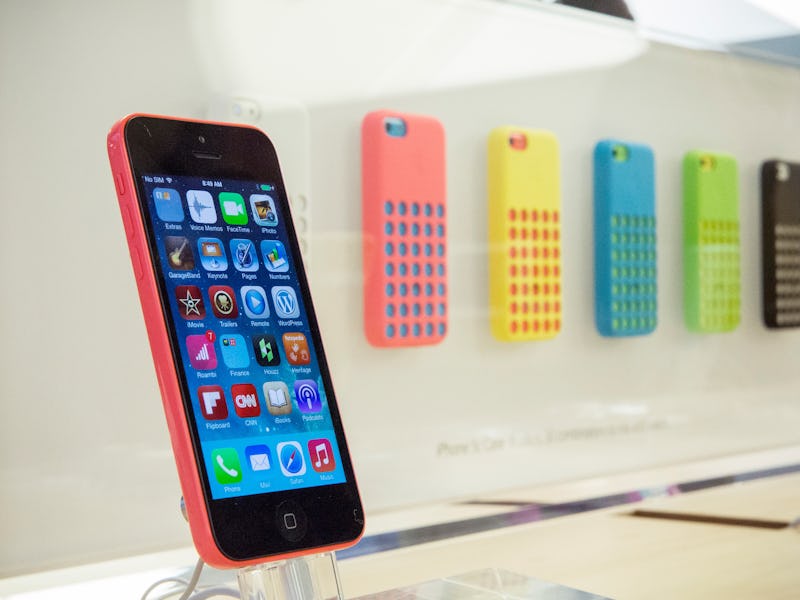Apple Turns Its Back on Variety With the New Wave of iPhones
Why isn't Apple continuing a base model iPhone?

When the Apple iPhone 5c debuted alongside the iPhone 5s counterpart in 2013, it was seen by some as a base-model alternative. At the time, the 5c cost a full $100 less than the 5s, was available with 16GB and 32GB of storage, and carried with it a line of brightly hued polycarbonate shells. For hesitant cheapskates like me who flirted with converting to iPhone, it was a welcome enticement. And now, with the new wave of iPhones just announced, the 5c and the idea of a base model seems depressingly quaint. So why isn’t there a 5c equivalent anymore?
In 2013, when the 5s/5c class launched, Apple quickly ran out of the former, pushing 9 million new iPhones of both models in the first weekend alone. But the writing was on the wall when CEO Tim Cook explained a disparity between the two at Apple’s earnings call the following year. “It was the first time we’d ever run that particular play before, and demand and percentage turned out to be different than we thought,” Cook explained. “We sold more 5s than we expected.”
That compliment to the 5s was actually a backhanded insult to the underperforming 5c; Apple in 2014 began offering only an 8GB model, a paltry capacity for an iPhone. The new iOS8 took 6.9GB of data to install, leaving a meager 1.1GB for those with the 5c — dregs, essentially.
Apple took a chance on a cheaper go-to for kids who wanted a smartphone but didn’t have the money or the technological inclination for something more powerful. But it seems like they failed a little too quickly and easily. Sure the 5s did have advantages over the 5c from the get-go: It had bigger storage options, had a better camera, had the nifty Touch ID feature, and had a speedier processor. But Apple could’ve tried harder to ride out the rough patches.
All Apple needed to do was iron out the tech specs and give reluctant buyers like myself more incentive to upgrade to or maintain the lowest iPhone level. Maybe they could have included the Touch ID but keep the better camera out in the next wave, or any other number of feature combinations that Apple pays many smart people to figure out.
Granted, this is asking Apple to neglect to do what it does best — make people give them a lot of money again and again — but variety is the spice of life. If the company wants total market saturation, it’s best to give everyone in all price ranges an opportunity to buy in, instead of a similar alternative for the new generation of the iPhone 6s and 6s. Plus, you either fork over the money or you’re stuck with an Android — sacrilege to the Apple faithful.
How are potential middle-to-low income customers going to be able to grow along with Apple? Now they’re doomed to be a generation behind every time, or be forced to spend money they don’t have on the more expensive variant. The other alternative would be to simply drive customers away. Neglecting to provide a base model basically says to potential customers, “Nope, the iPhone is a luxury item, and Samsung will gladly take the lower amount of money you can afford for a smartphone. Sorry, bye now.”
It’s a shame that Apple doesn’t seem to want to carry on with a wide assortment of their most popular product. Two versions may be enough for some, but it isn’t enough for the budget minded consumers out there willing to pay Apple what they have.